|
Size: 4774
Comment:
|
Size: 4766
Comment:
|
| Deletions are marked like this. | Additions are marked like this. |
| Line 9: | Line 9: |
| I've been drinking '''a lot''' of sake for many years now; at the moment I've amassed a large collection of good sakes and have only just started recording my impressions here, but until I get through them this will probably be on the sparse side.<br clear="left"/> | I've been drinking '''a lot''' of sake for many years now; at the moment I've amassed a large collection of good sakes and have only just started recording my impressions here, but until I get through them this will probably be on the sparse side.<br clear="left"> |
| Line 13: | Line 13: |
| This import's pretty tasty--dryish with a slightly yeasty smell. Brewed by Kiminoi Shuzo.<br clear="left"/> | This import's pretty tasty--dryish with a slightly yeasty smell. Brewed by Kiminoi Shuzo.<br clear="left"> |
| Line 17: | Line 17: |
| Slightly sweeter than I would prefer, but still absolutely one of the best imported sakes I've had. It's remarkably clean and crisp tasting, smooth but still a bit of an alcohol flavor (according to the label it's 16-17%ABV so climbing up into the range of genshu). I'm usually able to find it at A Southern Season in Chapel Hill, NC and try to keep it on hand for entertaining any sake-appreciating guests. Waraji in Raleigh, NC has also started carrying it on their regular list.<br clear="left"/> | Slightly sweeter than I would prefer, but still absolutely one of the best imported sakes I've had. It's remarkably clean and crisp tasting, smooth but still a bit of an alcohol flavor (according to the label it's 16-17%ABV so climbing up into the range of genshu). I'm usually able to find it at A Southern Season in Chapel Hill, NC and try to keep it on hand for entertaining any sake-appreciating guests. Waraji in Raleigh, NC has also started carrying it on their regular list.<br clear="left"> |
| Line 21: | Line 21: |
| A good (but not great) selection from the Akita Shurui Seizo brewery. For supposedly being junmai daiginjo, it's a bit on the harsh and gamey side... still fruity and fairly clean but not one I would be likely to buy very often.<br clear="left"/> | A good (but not great) selection from the Akita Shurui Seizo brewery. For supposedly being junmai daiginjo, it's a bit on the harsh and gamey side... still fruity and fairly clean but not one I would be likely to buy very often.<br clear="left"> |
| Line 25: | Line 25: |
| This domestic sake is a staple in my refrigerator. It's a fairly inexpensive domestic with a slightly funky modestly fruity flavor. SCB is often referred to as ''The Budweiser of Sake'' and I usually don't go near the stuff, but this particular variety of theirs is not so bad. At the moment it's still one of the only easily-obtainable sakes labeled as ''organic'' in the USA. Don't let the claim to be a nama sake fool you though... while it '''is''' unpasteurized, it's still shelf-stable due to microfiltering and as such it shouldn't qualify as a real nama. I first tried it at Waraji in Raleigh, NC and found it to be to my liking, though nowhere near the best on their list. Since then the Earth Fare where I usually do my grocery shopping has started stocking it regularly, and I've begun to see it at a number of other places as well.<br clear="left"/> | This domestic sake is a staple in my refrigerator. It's a fairly inexpensive domestic with a slightly funky modestly fruity flavor. SCB is often referred to as ''The Budweiser of Sake'' and I usually don't go near the stuff, but this particular variety of theirs is not so bad. At the moment it's still one of the only easily-obtainable sakes labeled as ''organic'' in the USA. Don't let the claim to be a nama sake fool you though... while it '''is''' unpasteurized, it's still shelf-stable due to microfiltering and as such it shouldn't qualify as a real nama. I first tried it at Waraji in Raleigh, NC and found it to be to my liking, though nowhere near the best on their list. Since then the Earth Fare where I usually do my grocery shopping has started stocking it regularly, and I've begun to see it at a number of other places as well.<br clear="left"> |
| Line 29: | Line 29: |
| A clean-tasting import from Hokkaido, made from Yamada Nishiki. I found a bottle at A Southern Season in Chapel Hill, NC. It's a good representative of its style and I would drink it again, but it's a bit pricey.<br clear="left"/> | A clean-tasting import from Hokkaido, made from Yamada Nishiki. I found a bottle at A Southern Season in Chapel Hill, NC. It's a good representative of its style and I would drink it again, but it's a bit pricey.<br clear="left"> |
| Line 33: | Line 33: |
| A fairly easily-obtained import, made in Kyoto from Koshihikari rice... this is a pretty good sake (not great, but good). It's a bit fruity and somewhat dry but just ever so slightly harsh. I'm also able to find this one at Earth Fare most of the time, so I usually tend to keep a bottle of it on hand.<br clear="left"/> | A fairly easily-obtained import, made in Kyoto from Koshihikari rice... this is a pretty good sake (not great, but good). It's a bit fruity and somewhat dry but just ever so slightly harsh. I'm also able to find this one at Earth Fare most of the time, so I usually tend to keep a bottle of it on hand.<br clear="left"> |
| Line 41: | Line 41: |
| I've tried a lot of things, from typical sake cups to shot glasses to burnished Japanese Cedar masu... I've finally settled on a small glazed ceramic rice bowl which fits comfortably in my hand and holds roughly one masu, rather like a chawan.<br clear="left"/> | I've tried a lot of things, from typical sake cups to shot glasses to burnished Japanese Cedar masu... I've finally settled on a small glazed ceramic rice bowl which fits comfortably in my hand and holds roughly one masu, rather like a chawan.<br clear="left"> |
Sake to me! Fungi's Sake Journal
Fungi likes to drink good, cold, dry sake. This page is mostly meant as a reminder for him of the sakes he's tried and whether they were worth having again. If your tastes are similar to his, you might find it useful too (or you might discover he has the World's worst palate for this sort of stuff, who knows?).
Contents
The List
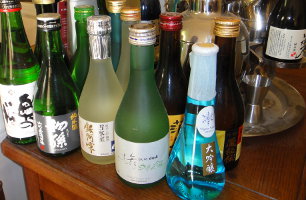 I've been drinking a lot of sake for many years now; at the moment I've amassed a large collection of good sakes and have only just started recording my impressions here, but until I get through them this will probably be on the sparse side.<br clear="left">
I've been drinking a lot of sake for many years now; at the moment I've amassed a large collection of good sakes and have only just started recording my impressions here, but until I get through them this will probably be on the sparse side.<br clear="left">
Nigata Kiminoi "Emperor's Well" Junmai Ginjo
![]() This import's pretty tasty--dryish with a slightly yeasty smell. Brewed by Kiminoi Shuzo.<br clear="left">
This import's pretty tasty--dryish with a slightly yeasty smell. Brewed by Kiminoi Shuzo.<br clear="left">
Nigata Koshino-Omachi Daiginjo
![]() Slightly sweeter than I would prefer, but still absolutely one of the best imported sakes I've had. It's remarkably clean and crisp tasting, smooth but still a bit of an alcohol flavor (according to the label it's 16-17%ABV so climbing up into the range of genshu). I'm usually able to find it at A Southern Season in Chapel Hill, NC and try to keep it on hand for entertaining any sake-appreciating guests. Waraji in Raleigh, NC has also started carrying it on their regular list.<br clear="left">
Slightly sweeter than I would prefer, but still absolutely one of the best imported sakes I've had. It's remarkably clean and crisp tasting, smooth but still a bit of an alcohol flavor (according to the label it's 16-17%ABV so climbing up into the range of genshu). I'm usually able to find it at A Southern Season in Chapel Hill, NC and try to keep it on hand for entertaining any sake-appreciating guests. Waraji in Raleigh, NC has also started carrying it on their regular list.<br clear="left">
Shimizu-No-Mai "Pure Dusk" Junmai Daiginjo
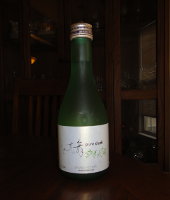 A good (but not great) selection from the Akita Shurui Seizo brewery. For supposedly being junmai daiginjo, it's a bit on the harsh and gamey side... still fruity and fairly clean but not one I would be likely to buy very often.<br clear="left">
A good (but not great) selection from the Akita Shurui Seizo brewery. For supposedly being junmai daiginjo, it's a bit on the harsh and gamey side... still fruity and fairly clean but not one I would be likely to buy very often.<br clear="left">
Sho Chiku Bai Organic Nama
 This domestic sake is a staple in my refrigerator. It's a fairly inexpensive domestic with a slightly funky modestly fruity flavor. SCB is often referred to as The Budweiser of Sake and I usually don't go near the stuff, but this particular variety of theirs is not so bad. At the moment it's still one of the only easily-obtainable sakes labeled as organic in the USA. Don't let the claim to be a nama sake fool you though... while it is unpasteurized, it's still shelf-stable due to microfiltering and as such it shouldn't qualify as a real nama. I first tried it at Waraji in Raleigh, NC and found it to be to my liking, though nowhere near the best on their list. Since then the Earth Fare where I usually do my grocery shopping has started stocking it regularly, and I've begun to see it at a number of other places as well.<br clear="left">
This domestic sake is a staple in my refrigerator. It's a fairly inexpensive domestic with a slightly funky modestly fruity flavor. SCB is often referred to as The Budweiser of Sake and I usually don't go near the stuff, but this particular variety of theirs is not so bad. At the moment it's still one of the only easily-obtainable sakes labeled as organic in the USA. Don't let the claim to be a nama sake fool you though... while it is unpasteurized, it's still shelf-stable due to microfiltering and as such it shouldn't qualify as a real nama. I first tried it at Waraji in Raleigh, NC and found it to be to my liking, though nowhere near the best on their list. Since then the Earth Fare where I usually do my grocery shopping has started stocking it regularly, and I've begun to see it at a number of other places as well.<br clear="left">
Takasago Ginja Shizuku "Divine Droplets" Junmai Daiginjo
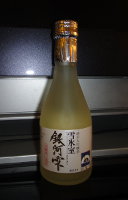 A clean-tasting import from Hokkaido, made from Yamada Nishiki. I found a bottle at A Southern Season in Chapel Hill, NC. It's a good representative of its style and I would drink it again, but it's a bit pricey.<br clear="left">
A clean-tasting import from Hokkaido, made from Yamada Nishiki. I found a bottle at A Southern Season in Chapel Hill, NC. It's a good representative of its style and I would drink it again, but it's a bit pricey.<br clear="left">
Tozai "Living Jewel" Junmai
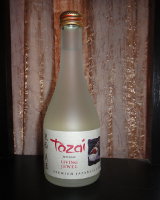 A fairly easily-obtained import, made in Kyoto from Koshihikari rice... this is a pretty good sake (not great, but good). It's a bit fruity and somewhat dry but just ever so slightly harsh. I'm also able to find this one at Earth Fare most of the time, so I usually tend to keep a bottle of it on hand.<br clear="left">
A fairly easily-obtained import, made in Kyoto from Koshihikari rice... this is a pretty good sake (not great, but good). It's a bit fruity and somewhat dry but just ever so slightly harsh. I'm also able to find this one at Earth Fare most of the time, so I usually tend to keep a bottle of it on hand.<br clear="left">
Sake Miscellanea
I'll wax philosophical about sake tasting, storage, production and many other things here. Feel free to ignore my ramblings.
Drinking Vessels
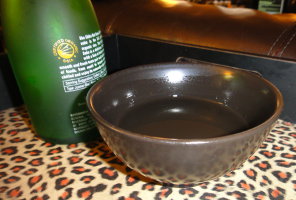 I've tried a lot of things, from typical sake cups to shot glasses to burnished Japanese Cedar masu... I've finally settled on a small glazed ceramic rice bowl which fits comfortably in my hand and holds roughly one masu, rather like a chawan.<br clear="left">
I've tried a lot of things, from typical sake cups to shot glasses to burnished Japanese Cedar masu... I've finally settled on a small glazed ceramic rice bowl which fits comfortably in my hand and holds roughly one masu, rather like a chawan.<br clear="left">
 To the extent possible under law, the creator of this work has waived all copyright and related or neighboring rights to it.
To the extent possible under law, the creator of this work has waived all copyright and related or neighboring rights to it.